Mumbai, MAHARSHTRA :
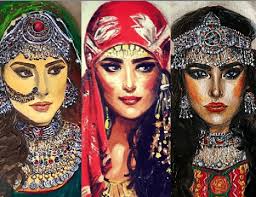
Five full minutes is what it takes for me to tear myself away from the allure of this painting I find myself staring at. Decked up in traditional jewellery and dress, it’s a portrait of a girl, looking back as if beckoning you to follow her, and yet there is nothing beyond her. Complete unto itself, the portrait doesn’t need a backdrop for contextualization. Your eyes must not travel elsewhere and the intrigue in her eyes ensures that it does not. The bold strokes defining dropped shoulders, tousled hair, lips that might break into a smile any minute, and eyes gazing intently at some unknown familiarity- Hana Bawa, a Mumbai based artist, paints the stuff of dreams. It’s not just the technical perfection of her paintings but the sheer magic of their intrigue that pulls you in.
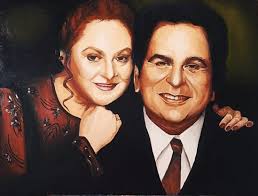
A 27 year old single mother, Bawa is a self- taught painter. Almost like that of a child prodigy, the story of her artistic journey begins with her perfectly complex childhood drawings. She was already drawing animal figures at the age of seven years. Born into a family of largely sportspersons, Bawa stands out for her artistic talent that finds some resonance only with her grandmother’s interest in crafting. Thanks to an unconventional family background, she never had to face the typical Indian parents’ pressures and diktats to pursue only a certain kind of career, and she remembers not to forget it, as she adds “I am immensely thankful to my family for being extremely supportive of my decisions and career choices throughout.” A graduate in sociology, she also pursued a fashion designing course but an intense passion for art propelled her towards the career path she eventually ended up paving for herself. It is her philosophy of “grow(ing) in whatever you choose to do” that makes her exclaim “I’m still learning” even after having sold numerous pieces of her stunning art.
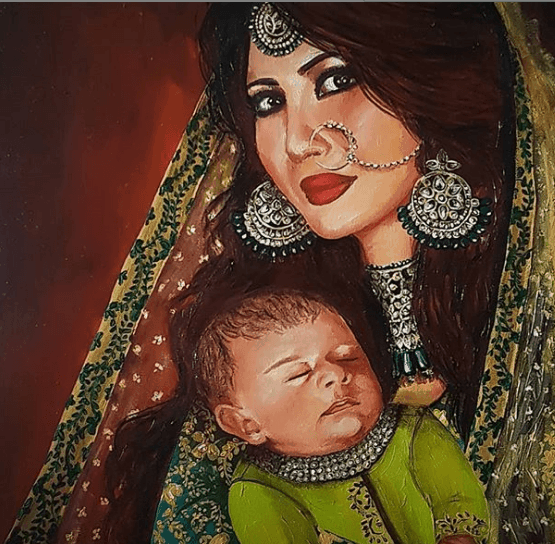
Hana Bawa has not just made commissioned artwork, but her paintings have also been exhibited in Minnesota (USA) apart from various art galleries in India, and Afghanistan – no mean feat for an artist who climbed this high sans a formal art training. When asked about her participation in the said exhibition on the theme of ‘Afghan Culture’, she tells me that it came about largely because of the fame she found in Afghanistan. Well- known in the foreign territory for her detailed paintings depicting Afghan culture, Bawa was asked by the curators of the exhibition to send her artwork that celebrated it. Following naturally from this impressive success story, my questions turn back, once again to her journey and how she made it this far without ever receiving a formal training. Probed further, she reveals that she learnt to colour, quite late in her life (at the age of seventeen) and that too, from the internet. Colours opened up for her, a richer and brighter world that was otherwise largely inaccessible. Colours also lent an emotive dimension to her art, because now she could use different kinds of strokes as well to create different effects, as is evident from her paintings.
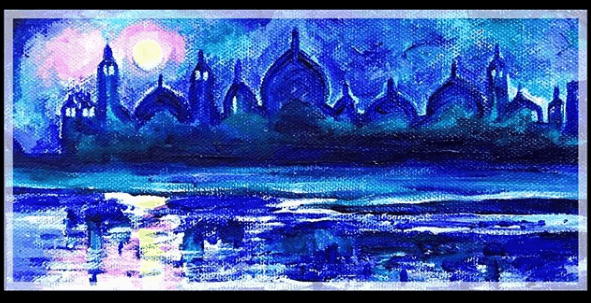
Hana Bawa’s bold and confident strokes sweeping the surface of the canvas neatly are characteristically hers, and hence find a place in almost all the portraits. Asked about the painters who inspire her, Bawa counts three off the top of her head, out of which it (rather unsurprisingly) is Vincent Van Gogh who receives the first mention. Julie Dumbarton, a Scottish landscape painter and another Turkish painter Remzi Taskiren are the other two artists she mentions. Though widely separated from each other in terms of their style, cultural background and subjects they choose for their paintings, all of these artists excel in their skilful use of bold strokes. Van Gogh – in creation of post- impressionistic art that laid the foundation for modern art; Dumbarton in her effective employment of the technique in order to create a riot of colours on a harmonious landscape and Taskiran in his deployment of bold strokes in his portrait paintings to create an effect not very different from what Bawa’s achieves. Apart from these artists, Bawa also adds ‘cultures from around the world’ and ‘women’ to her list of influences and inspirations. With so much for a thought, I expect to hear of the politics that informs her paintings. Painting mostly women from middle- eastern cultures I assume carries a certain kind of latent political symbology, given the kind of times we are living in; but Hana vehemently denies any conscious political underpinnings to her alluring portraits.
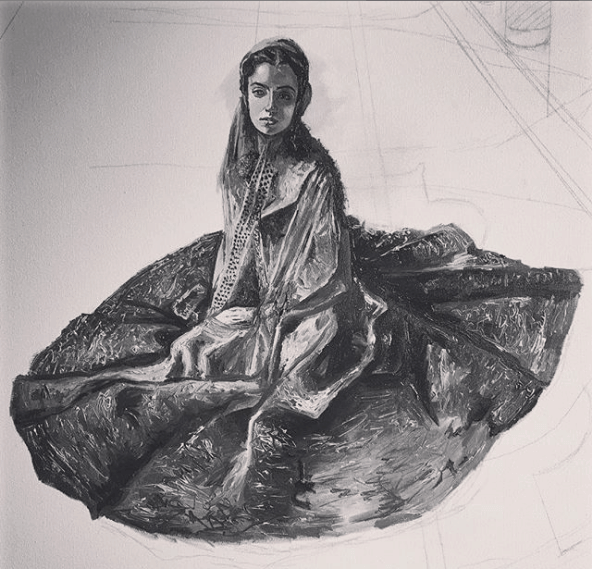
She says “No, nothing political. I’m just drawn to these cultures because I cannot actually experience them, so I live them through my paintings and also allow others to access the same through them. For this reason, I do not paint portraits, I try to paint emotions. So, I focus a lot on the eyes – the windows to the soul. It is the look that captivates, not the colours, or the sketch. I paint anything that has a culture and meaning associated with it.”
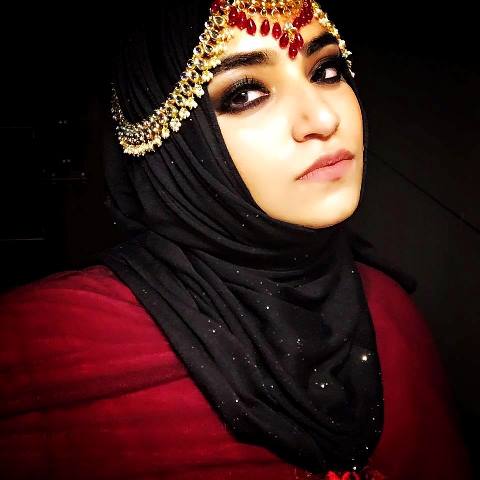
We end the conversation with Bawa telling me about her four year old showing exactly the same skills as she did at his age, if not better. As I sit down to write this, and the world witnesses Bawa’s phenomenal skill and artistic genius, I smile with the hope that there’s another young life who might further enliven the world she has created and aims to create through her art – a world of emotions, passion, dreams and intrigue.
Click here to follow Hana Bawa on Instagram.
source: http://www.muslimmirror.com / Muslim Mirror / Home> Featured / by Iqra Raza / November 05th, 2019








